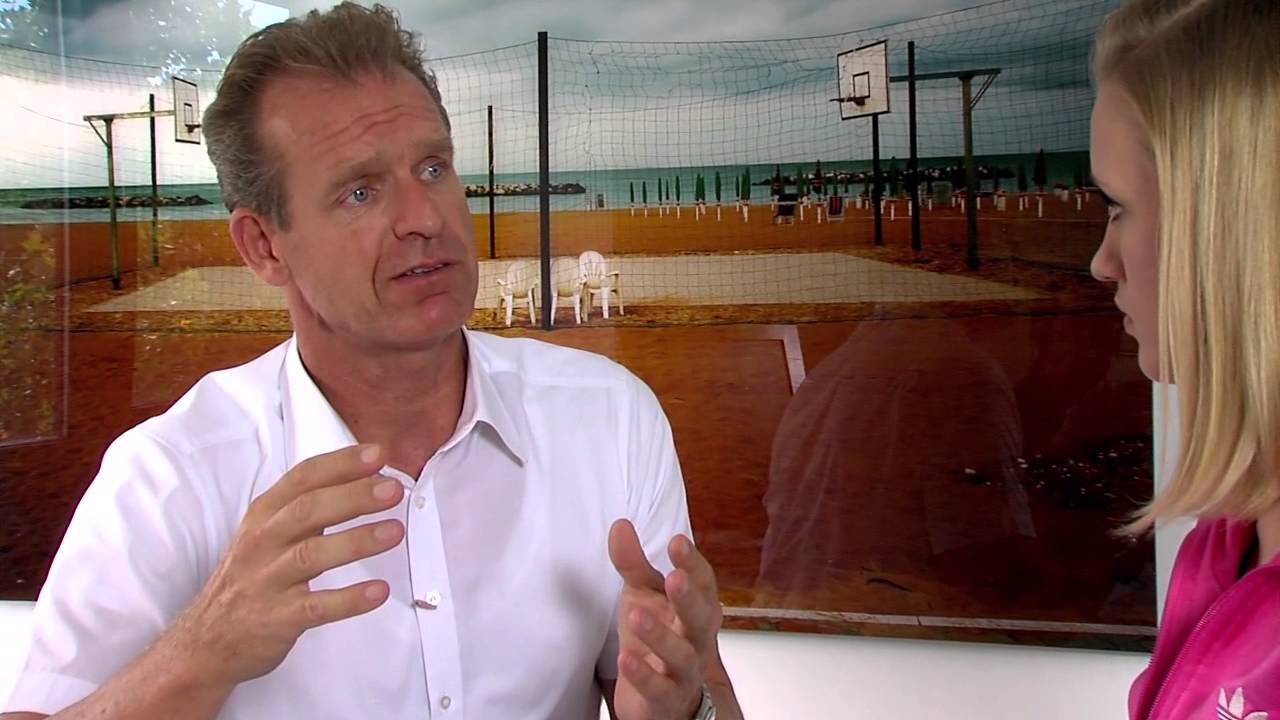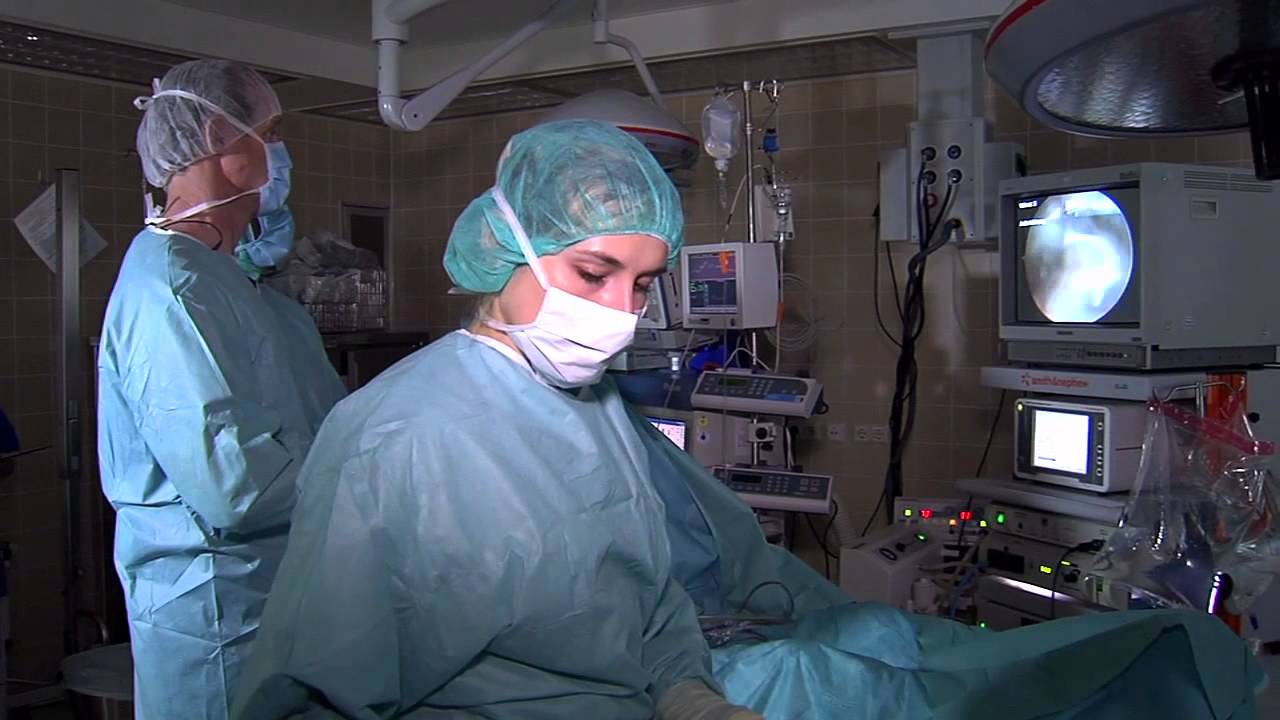
Shoulder Luxation
Definition: Shoulder Luxation
The shoulder is the most mobile joint in the human body. However, this high degree of flexibility also means that in comparison to other joints, the shoulder joint is extremely vulnerable to being dislocated.
Dislocation occurs when the head of the upper arm bone is forced out of the shoulder socket, which usually results in more injuries such as lacerations to the joint capsule and the stabilizing ligaments. Also, cartilage, bone, and nerve injuries can be a result of chronic dislocation. Especially at risk is the glenoid labrum (fibrocartilaginous rim), which may tear as a result of chronic instability.
Diagnose: Shoulder Luxation
Freeclimbing/SchulterluxationIf after a fall or by violent jerking of the shoulder pain sets in and the arm or shoulder cannot be moved properly, the primary concern next to a broken bone, must be whether the shoulder is dislocated. The diagnosis dislocated shoulder shows quite clearly in the clinical examination and X-ray.
Once the diagnosis is made, the shoulder joint must be placed gently back into its normal position. In some cases this can only be achieved under a short general anesthesia. To conclude which structures have been injured to what extent, a magnetic resonance imaging (MRI) of the shoulder should be performed to accurately assess the scope of the injury.
Aside from an accident-related shoulder dislocation sustained as part of a sports injury, shoulder dislocation some people suffer from congenital instability. These people usually have a very soft and weak connective tissue bands (lax ligaments). A shoulder luxation can happen during normal everyday activities and moderate stress on the shoulder. Shoulder specialists call this type of shoulder instability "habitual dislocation of the shoulder”. It is important to clearly differentiate between these two types of luxation, since they each require a different type of treatment.
 Video: Schulterluxation Diagnose Behandlung
Video: Schulterluxation Diagnose Behandlung
Treatment Strategy: Luxation Shoulder
SchulterluxationIf after an accident-related shoulder luxation the MRI exam shows that important stabilizers have been injured, it is essential–especially in young people– for a shoulder specialist to repair the structures surgically as soon as possible.
Early treatment provides the highest chance that the patient regains permanent stability of the shoulder. Otherwise, as scientific studies show, the shoulder remains in more than 85% of the cases chronically unstable, e.g. the patient may suffer from repeated subluxations of the shoulder even during everyday activities. Today, modern arthroscopic surgical techniques ensure low risk surgeries that are gentle on the patients.
Elderly patients have a significantly lower risk of the shoulder remaining chronically unstable after an accident-related dislocation shoulder, e.g. that the shoulder repeatedly dislocates. Older people should therefore only be operated arthroscopically for a dislocated shoulder if important shoulder tendons are torn during the accident.
Patients with habitual dislocations of the shoulder, i.e. a dislocation resulting from a congenial capsular ligament weakness, possibly in combination with weak shoulder muscles, should initially be treated conservatively. This means that after the relocation/reduction, the shoulder is immobilized for three weeks with a bandage, so that the overstretched joint capsule can heal. Following, an intense physical therapy and coordination training are recommended to strengthen the muscles. Only if the shoulder does not remain stable despite these measures, surgical procedures should be taken into consideration.
Surgical Treatment: Luxation Shoulder / Chronic Instability Shoulder
Today shoulder specialists operate shoulder instability almost always minimally invasive, i.e. arthroscopically. In arthroscopy the repair of the injured structures is done over three millimeter incisions. With a miniature camera that is inserted into the joint via one the small incisions, the injured structures can be accurately inspected and reconstructed with fine surgical instruments specifically made for arthroscopic surgery.
The main goal is to reattach the torn lip joint (glenoid labrum) to the original location using special implants of titanium or bioabsorbable materials. At the same time, the torn ligaments and the overstretched joint capsule can be tightened.
If the damage to the joint is larger or if the shoulder was previously already dislocated, it may be possible that additionally damage to the bony acetabulum (Bankart lesion) and the humeral head (Hill-Sachs Delle) have occurred. If the bone damages exceed a certain size, the shoulder cannot be permanently stabilized solely by reconstruction of the torn soft tissues. For this purpose an additional bone reconstruction is required.
Such a bone reconstruction can be done with the Latarjet procedure (coracoid process). With this procedure a renewed shoulder dislocation and the therewith associated long-term osteoarthritis can be prevented very effectively. This process has been performed as open surgery with good long-term results since 1954.
The specific instruments (DePuy / Mitek) that are necessary for arthroscopic procedures (according to L. Lafosse) are already in existence since 2010. The Latarjet surgery is technically demanding and only very few specialists are able to perform it arthroscopically. The medical team of the Klinik am Ring - Cologne, headed by the chief physician A. Lages, M.D., has been performing this specific arthroscopic surgery with great success since 2012 and is therefore an official training center for other surgeons.
Anesthesia: Surgical Treatment / Luxation Shoulder / Chronic Instability Shoulder
An arthroscopic surgery of an unstable shoulder joint does require general anesthesia.
Often the general anesthesia is combined with a local anesthesia of the nerve plexus ( plexus cervicalis) at the shoulder. This combined anesthesia calls for less medication in the general anesthesia and can thus be tolerated better by the patient.
Postoperative Treatment: Surgery / Luxation Shoulder / Chronic Instability Shoulder
SchulterfixationAfter arthroscopic reconstruction of the injured structures sufficient healing is essential. The shoulder must be immobilized with a bandage during the first three weeks. However, for an optimal healing success, physiotherapy and home exercises are necessary immediately following the surgery.
Rehabilitation training for strengthening and coordination training of the shoulder girdle muscles should start approximately six weeks after the operation. After about six months, patients may return to active sports, e.g. contact sports and sports involving the risk of falling.
Specialists: Shoulder luxation
For an optimal treatment of shoulder luxation and/or chronic instability of the shoulder joint, the shoulder experts at the Klinik am Ring are particularly well-qualified. Stefan Preis, M.D. and Jörg Schroeder, M.D., senior physicians at the Practice and Department of Orthopedics and Sports Traumatology at the Klinik am Ring in Cologne, specialize together with their team in the treatment of knee and shoulder disorders. In 2004, they founded the WEST GERMAN SHOULDER KNEE & CENTER, Cologne. The team consisting of eight specialists treats more than 10,000 patients per year. They are performing more than 2500 surgeries per year, of which meantime several hundred are arthroscopic stabilization surgeries of the shoulder joint.




